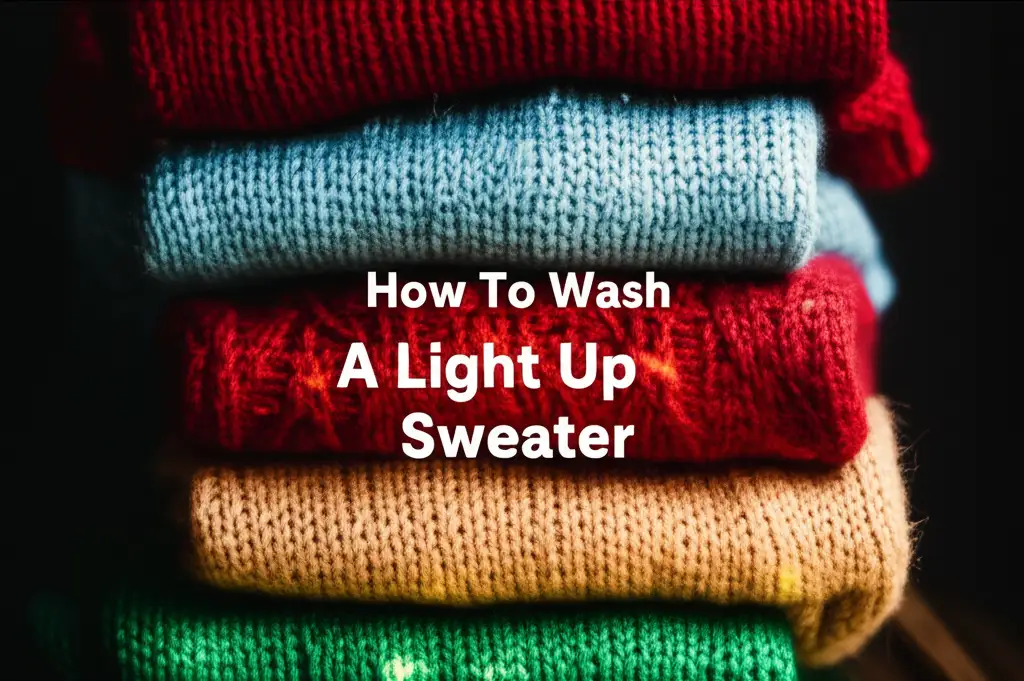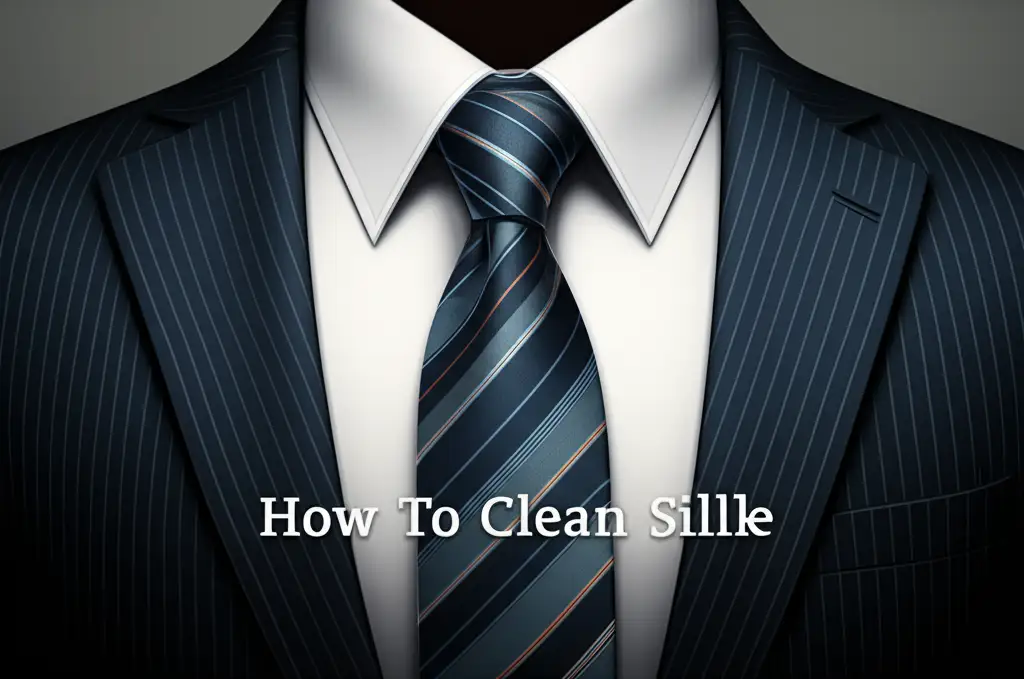· Clothing Care · 18 min read
How To Clean Vintage Clothes

How To Clean Vintage Clothes: A Gentle Guide
Do you own beautiful vintage clothes? These special garments carry stories from the past. Keeping them clean and well-preserved is important. Many people feel nervous about washing old clothes. They worry about causing damage.
Cleaning vintage clothes requires a careful approach. You must consider the fabric, age, and condition. Harsh chemicals or machine washing can destroy delicate materials. This guide will show you how to clean vintage clothes safely. We will cover preparation, washing methods, and proper care. My goal is to help you enjoy your vintage finds for many years.
Takeaway
- Identify the fabric type and age of your vintage garment before cleaning.
- Always test cleaning solutions on a hidden area first.
- Hand washing is generally the safest method for most vintage clothes.
- Address specific stains with gentle, targeted treatments.
- Air dry vintage items away from direct heat and sunlight.
- Store vintage clothing properly to prevent damage and degradation.
Clear Answer
To clean vintage clothes, identify the fabric and check for damage. Always hand wash delicate items using cool water and mild, pH-neutral detergent. Spot treat stains carefully, then rinse thoroughly. Air dry flat or on a padded hanger away from heat, and store properly to preserve the garment.
Understanding Vintage Fabrics: The First Step to Safe Cleaning
Before you clean any vintage clothes, you must understand their fabric composition. Old clothes often use materials different from modern ones. Some fabrics are very delicate. Knowing the fabric helps you choose the right cleaning method.
Natural fibers like cotton, linen, silk, and wool are common in vintage garments. Cotton and linen are generally more robust. Silk and wool are very sensitive. They can shrink, stretch, or lose their shape if handled improperly. Older rayons and acetates are also fragile. They can dissolve or weaken with water. Synthetic fibers, like early nylons or polyesters, are usually more stable. However, they can still degrade over time. Checking care tags is often not helpful. Many vintage items lack tags, or the tags are faded. You may need to identify the fabric by sight and touch. This step prevents irreversible damage to your cherished item.
Identifying Common Vintage Materials
- Cotton and Linen: These fabrics feel crisp or soft. They do not stretch easily. You can often see the weave clearly.
- Wool: Wool feels warm and can be slightly fuzzy. It has elasticity. Wool can felt or shrink with heat and agitation.
- Silk: Silk feels smooth and cool. It drapes well and has a natural sheen. Silk weakens when wet.
- Rayon and Acetate: These early synthetics can look like silk or cotton. They often feel soft. They are prone to shrinking and developing water spots.
- Nylon and Polyester (Early): These feel slick or synthetic. They are more durable than natural fibers.
Always research the specific properties of any fabric you are unsure about. This knowledge is your best defense against cleaning mistakes. For example, some early synthetic blends might react unpredictably. I always keep a fabric guide handy for quick reference. This preparation makes me feel more confident.
Pre-Cleaning Checks: Assessing Your Vintage Garment
A thorough inspection is vital before you even think about water or cleaner. This step helps you identify problems. It also lets you plan the best cleaning approach. You need to check for hidden damage or instability. Rushing this part can lead to irreparable harm to your vintage clothes.
First, examine the entire garment under good light. Look for loose seams, torn areas, or missing buttons. Check for any embellishments like beads, sequins, or delicate lace. These can easily break off or unravel during cleaning. Test any dyes for colorfastness. This means checking if the color will bleed. Dab a small, hidden area with a damp white cloth. If color transfers, the item is not colorfast. This means you should not wash it with water. You also need to look for existing stains. Different stains require different treatments. Some stains may be impossible to remove without damaging the fabric. For example, old oil stains can oxidize into the fibers. Sometimes, it is better to leave a stain than to ruin the item. Think of it as part of the garment’s history.
What to Look For During Inspection
- Fabric Integrity: Check for any tears, holes, or weakened areas. Areas like underarms or collars often show wear first.
- Seams and Stitching: Are stitches loose? Do seams look like they might unravel? Reinforce them if needed.
- Embellishments: Gently tug beads or sequins. If they feel loose, consider removing them before washing. You can sew them back on later.
- Dye Colorfastness: Use a clean, white cloth. Dampen it with a tiny amount of water. Press it gently on an inconspicuous area, like an inside seam. If color transfers, the item is not water-safe.
- Stains: Identify the type of stain if possible. Old stains can be tricky. Decide if removal is worth the risk. If you find signs of mildew or mold, you should address those specifically. Learn how to clean mold on clothes or how to clean mildew from clothes for targeted treatment before general washing. This prevents spreading the issue.
If you find multiple areas of extreme fragility, hand washing might still be too much. In such cases, professional vintage textile conservators are the safest option. They have specialized knowledge and tools. They can clean the item without causing further damage. This initial check protects your garment.
Gentle Hand Washing: The Safest Method for Many Vintage Items
Hand washing is usually the best way to clean vintage clothes. It offers control and gentle treatment. Machine washing is too harsh for most old garments. Even the delicate cycle can cause damage. High agitation, hot water, and strong detergents can destroy fragile fibers. My personal experience confirms this. I once ruined a lovely 1950s dress by putting it in the machine.
Before you start, gather your supplies. You need a clean basin or tub. The sink works well if it is very clean. Use cool or lukewarm water, never hot. Hot water can cause shrinkage, dye bleeding, or fiber damage. Choose a pH-neutral, mild detergent. Look for detergents specifically designed for delicates or wool. Avoid harsh bleaches or strong stain removers. These can strip color or weaken fabric. When washing, support the garment’s weight. Do not wring or twist the fabric. Squeezing can stretch or tear old fibers. Handle the item like a very delicate treasure.
Steps for Hand Washing Vintage Clothes
- Prepare Your Wash Area: Clean your sink or basin thoroughly. Make sure there are no harsh cleaning residue. Fill it with cool or lukewarm water. Add a small amount of mild, pH-neutral detergent. Swish to mix.
- Submerge Gently: Carefully place the vintage item into the water. Ensure the entire garment is submerged. Avoid dropping it quickly. This can create stress points.
- Soak and Swish: Let the item soak for 10-20 minutes. For very delicate items, a shorter soak is better. Gently swish the garment in the water. Do not scrub or rub. Focus on releasing dirt, not scrubbing it away.
- Rinse Thoroughly: Drain the soapy water. Refill the basin with clean, cool water. Gently press the garment to release suds. Repeat this rinsing process several times until no soap remains. The water should run clear.
- Remove Excess Water: Do not wring the garment. Gently lift it, supporting its weight. Press excess water out by squeezing it against the side of the basin. You can also roll the item in a clean, thick towel. This absorbs a lot of water. If you are cleaning thrift clothes, this gentle approach is also ideal for their first wash to ensure no damage occurs. Learn more about how to clean thrift clothes for general tips.
Some items might be too large for a sink. For larger vintage garments, you might consider how to wash clothes in a bathtub. The principles remain the same: gentle handling and appropriate water temperature. This method helps maintain the garment’s shape and integrity.
Tackling Stains on Vintage Clothes: A Delicate Approach
Stain removal on vintage clothes is tricky. Old stains can be set in the fabric. Aggressive methods can damage the delicate fibers. Always approach stain removal with extreme caution. Your goal is to lift the stain, not to scrub it out. Sometimes, a stain becomes part of the garment’s history. It is better to have a slight stain than a hole.
Start with the mildest possible solution. Test it on an inconspicuous area first. This ensures the solution will not cause fading or damage. For general dirt or light discoloration, a gentle soak during hand washing might be enough. For specific stains, you need targeted treatments. Old protein stains, like blood or food, are best treated with enzyme cleaners. These break down organic matter. For greasy stains, a small amount of mild dish soap can work. Always rinse the area thoroughly after treatment. Do not let stain removers dry on the fabric. If you have dingy white vintage clothes, special care is needed. Learn about how to clean dingy white clothes for techniques to brighten them safely without harsh bleaches.
Targeted Stain Treatment Tips
- General Dirt/Yellowing: A prolonged soak (up to an hour) in cool water with a mild oxygen-based whitener (non-chlorine bleach) can help. Always test first.
- Protein Stains (Blood, Food): Use a pre-treatment with an enzyme cleaner. Apply it directly to the stain. Let it sit for a few minutes. Then, gently blot. Do not rub. Rinse well.
- Grease/Oil Stains: Apply a small amount of mild liquid dish soap directly to the stain. Gently work it in with your finger. Blot with a clean cloth. Rinse the area. A small amount of cornstarch or talcum powder can absorb fresh grease before washing.
- Mold/Mildew Spots: For delicate fabrics, a diluted solution of hydrogen peroxide or white vinegar can help. Always dilute and test. For more robust fabrics, or if mold is extensive, refer to guides on how to clean clothes exposed to mold spores. These stains are serious.
- Rust Stains: These are very difficult. You might need a specialized rust remover for fabric. Test it carefully. Often, these are best left to professionals.
Remember, patience is key. Repeat mild treatments instead of trying one strong one. If a stain does not come out, accept it. The garment’s history is part of its charm. Avoid harsh scrubbing. This can abrade fibers.
When to Seek Professional Help: Dry Cleaning and Restoration
Not all vintage clothes can be cleaned at home. Some materials require specialized care. Others are too fragile for any water-based cleaning. Knowing when to consult a professional is crucial. This decision protects your valuable garments. A reputable cleaner or conservator has the expertise. They also have specialized equipment.
Leather, suede, and fur items usually need professional dry cleaning. Water can stiffen, shrink, or damage these materials. Heavily embellished garments are also better left to experts. Beads, sequins, and delicate embroidery can unravel or break in water. Fragile textiles like highly disintegrated silk or very old lace are also high risk. They might literally fall apart when wet. Garments with complex construction, like structured suits or heavily tailored pieces, often benefit from dry cleaning. Water can alter their shape. Look for dry cleaners specializing in vintage or delicate garments. Even better, find a textile conservator. These professionals focus on preservation, not just cleaning. They understand historical fabrics.
When to Consult a Professional
- Delicate Materials: Leather, suede, fur, velvet, or very fragile silks. For specific instructions on cleaning different materials, consider resources on how to clean leather clothes.
- Heavy Embellishments: Garments with extensive beading, sequins, delicate lace, or elaborate embroidery.
- Structural Integrity Concerns: Items with significant tearing, shredding, or extremely weak seams.
- Non-Colorfast Dyes: If your dye test showed color bleeding, water washing is not an option.
- Unknown Fabric Composition: When you cannot identify the fabric and are unsure of its water reactivity.
- Severe or Set Stains: Especially those like rust, extensive yellowing, or very old oil stains that home methods cannot touch.
- Valuable or Sentimental Items: If the garment has high monetary or emotional value, professional care reduces risk.
A professional will assess the garment. They will discuss the risks and expected outcomes. They use gentle dry cleaning solvents. They also have methods for stabilizing delicate fabrics. Sometimes, they perform “wet cleaning” with highly controlled humidity and specialized detergents. This is different from home washing. They can also perform minor repairs or stabilization. This preserves the garment’s life.
Drying and Storing Vintage Clothes: Preserving Their Beauty
Proper drying and storage are as important as cleaning. Incorrect methods can undo all your careful work. They can cause shrinkage, stretching, or permanent damage. Air drying is almost always the safest method for vintage clothes. Avoid machine dryers at all costs. The high heat and tumbling action are destructive.
After hand washing, gently remove excess water. Do not wring or twist. Roll the garment in a clean, thick towel to absorb moisture. For knit items like sweaters, always dry them flat. Lay them on a clean, dry towel on a flat surface. This prevents stretching. For woven items like dresses or blouses, you can hang them. Use padded hangers to avoid shoulder bumps. Do not use wire hangers. They can deform the garment. Ensure good air circulation. Dry away from direct sunlight or heat sources. Sunlight can fade colors. Heat can cause shrinkage or fiber damage. Drying can take a long time. Be patient.
Best Practices for Drying and Storage
- Drying Flat: For knits (sweaters, cardigans) and very delicate items. Lay them flat on a clean, dry towel. Reshape them as they dry.
- Padded Hangers: For dresses, jackets, or blouses. Use hangers with wide, soft padding. This supports the garment’s shape.
- Air Circulation: Ensure the drying area has good airflow. A fan can help.
- Avoid Direct Heat/Sunlight: Keep items away from radiators, vents, or sunny windows.
- Complete Dryness: Ensure the garment is completely dry before storing. Any remaining moisture can lead to mold or mildew growth.
- Breathable Storage: Store vintage clothes in breathable garment bags or acid-free tissue paper. Avoid plastic dry cleaning bags. These trap moisture and chemicals. They can also yellow fabrics.
- Cool, Dark, Dry Place: Store clothes in a stable environment. Attics and basements are often too humid or have temperature swings. A closet inside your home is usually best.
- Pest Control: Use natural pest repellents like cedar sachets. Do not use mothballs. Their chemicals can damage fabrics.
I personally use breathable cotton garment bags for my special pieces. I also use acid-free tissue paper to stuff sleeves and bodices. This helps maintain shape. Proper storage extends the life of your vintage clothes. It protects them from dust, light, and pests.
Special Considerations for Specific Vintage Materials
Some vintage materials need unique care. Their composition makes them react differently to cleaning agents. Understanding these specific needs prevents damage. General rules apply, but these materials require extra caution. Do not treat all vintage items the same.
Consider old silk and lace. Silk is a protein fiber. It weakens significantly when wet. It can also yellow or develop water spots. Hand wash silk very gently. Use only cool water. Avoid twisting or rubbing. Lace, especially antique lace, is incredibly fragile. It can tear easily. Hand wash lace by letting it soak. Place it between two mesh screens for support. This prevents stretching. Wool is another protein fiber. It can shrink and felt with heat and agitation. Always wash wool in cool water. Lay it flat to dry. Do not hang wet wool.
Handling Unique Vintage Fabrics
- Silk:
- Washing: Hand wash in cool water with a mild silk-specific detergent. No scrubbing. Just gentle swishing.
- Drying: Roll in a towel to remove excess water. Lay flat or hang on a padded hanger, away from sunlight. Iron on a low setting while damp, if necessary, using a press cloth.
- Lace (Especially Antique):
- Washing: Place the lace between two pieces of clean mesh or a pillowcase before placing it in cool, soapy water. This provides support. Swish gently.
- Drying: Lay flat on a clean towel. Reshape carefully. Do not hang.
- Wool (Knit or Woven):
- Washing: Hand wash in cool water with wool-specific detergent. Do not agitate or rub.
- Drying: Roll in a towel. Lay flat to dry on a clean towel, reshaping as it dries. Avoid heat.
- Beaded or Sequined Garments:
- Washing: Spot clean only if possible. If a full wash is needed, hand wash very gently. Turn the garment inside out. Support the embellished areas. Dry flat. Professional cleaning is often safest.
- Velvet:
- Washing: Most velvet should be dry cleaned. If it’s a very robust synthetic velvet, you might spot clean. Test thoroughly. Water can leave permanent marks or crush the pile.
- Steaming: Gentle steaming can refresh velvet. Hold the steamer away from the fabric. Do not press.
Always err on the side of caution. If unsure, test a small, hidden area. Sometimes, brushing off surface dirt is enough. You do not need to wash every vintage item fully. My experience taught me that less is often more. This is especially true for these delicate materials.
Revitalizing and Preserving Vintage Clothes Long-Term
Cleaning is just one part of caring for vintage clothes. Long-term preservation ensures they last. This involves ongoing monitoring and correct storage. Your effort in cleaning will be wasted without proper aftercare. Good practices protect your investment.
Regularly inspect your vintage items. Look for signs of pests or changes in fabric condition. Pests like moths can cause serious damage. Keep storage areas clean. Use cedar products as a natural deterrent. Ensure your storage environment is stable. Fluctuations in temperature and humidity are harmful. Extreme heat or cold can degrade fibers. High humidity encourages mold and mildew. Low humidity can make fibers brittle. A consistent, cool, and dry place is ideal. Avoid storing vintage items in attics or basements. These areas often have poor environmental control.
Long-Term Preservation Tips
- Pest Monitoring: Check clothes periodically for signs of insect activity. Use cedar hangers or sachets. Vacuum storage areas regularly.
- Environmental Control: Store vintage clothes in a cool, dark, dry place. Aim for a temperature around 65-75°F (18-24°C) and relative humidity between 40-50%.
- Proper Hangers: Continue using padded hangers for items that hang. This prevents stretching and shape distortion.
- Acid-Free Storage: Use acid-free tissue paper for folding items. Line storage boxes with acid-free materials. This prevents yellowing and fiber degradation over time.
- Avoid Over-stuffing: Do not pack closets or drawers too tightly. Air circulation is important.
- No Plastic Bags: Never store vintage clothes in typical plastic dry cleaning bags. They trap moisture and emit fumes. Use breathable garment bags made of cotton or linen.
- Rotate and Rest: Give your vintage garments a break between wears. This allows fibers to rest. Air them out after wearing before storing.
- Minimal Handling: Handle vintage items as little as possible. Oils from your hands can transfer. Always wash your hands before handling them.
By following these preservation tips, you extend the life of your vintage clothes. You protect them from common degradation factors. These garments are a link to history. We should treat them with respect. Proper care ensures they remain beautiful for future generations.
FAQ Section
Q1: Can I put all vintage clothes in the washing machine on a delicate cycle? No, you cannot. Most vintage clothes are too delicate for machine washing, even on a delicate cycle. The agitation and spin can cause shrinking, stretching, or tearing of old fibers. Hand washing is almost always the safest method to protect the garment’s integrity and preserve its original condition.
Q2: What kind of detergent should I use for cleaning vintage garments? You should use a mild, pH-neutral detergent specifically designed for delicate fabrics. Look for formulas that are free of harsh chemicals, bleaches, or strong enzymes. Woolite or gentle baby shampoos can sometimes work. Always dilute the detergent in water before introducing the garment.
Q3: How do I remove stubborn stains from very old fabric without causing damage? Start with the gentlest approach. Test any stain remover on a hidden seam first. For protein stains, use an enzyme cleaner. For grease, try mild dish soap. Apply it gently, blot, and rinse. If the stain is very old or stubborn, consider professional textile conservation to avoid damaging the fragile fabric.
Q4: Is dry cleaning always safe for vintage clothes? No, dry cleaning is not always safe. While necessary for materials like leather, suede, or heavily embellished items, the chemicals in dry cleaning can sometimes damage delicate fibers or dyes in certain vintage fabrics. Always choose a dry cleaner with experience in handling vintage or antique textiles.
Q5: How should I store vintage clothes after cleaning them? Store vintage clothes in a cool, dark, and dry place. Use breathable garment bags made of cotton or linen, never plastic. Fold items with acid-free tissue paper to prevent creasing and yellowing. Use padded hangers for items that need to hang. Avoid attics or basements due to humidity and temperature fluctuations.
Q6: What if my vintage garment has a strong musty smell but no visible mold? A musty smell indicates mildew spores. First, air the garment outdoors in the shade for a few hours. If the smell persists, try soaking it in cool water with a cup of white vinegar or baking soda for an hour. Rinse thoroughly. For persistent smells, you might need professional help or more targeted mold cleaning.
Conclusion
Caring for vintage clothes is a labor of love. It brings me immense satisfaction to preserve these pieces of history. We have covered the essential steps to clean vintage clothes safely. We discussed identifying fabrics, conducting thorough pre-cleaning checks, and mastering gentle hand washing techniques. We also explored delicate stain removal, knowing when to seek professional help, and ensuring proper drying and storage.
Remember, patience and gentle methods are your best tools. Every vintage garment has a unique story. Treating it with respect ensures that story continues. By following these guidelines, you can maintain the beauty and integrity of your cherished vintage clothes for years to come. Start today and give your vintage treasures the gentle care they deserve. Your beautiful finds will thank you.
- vintage clothes cleaning
- antique garment care
- delicate fabric washing
- preserving old clothes




